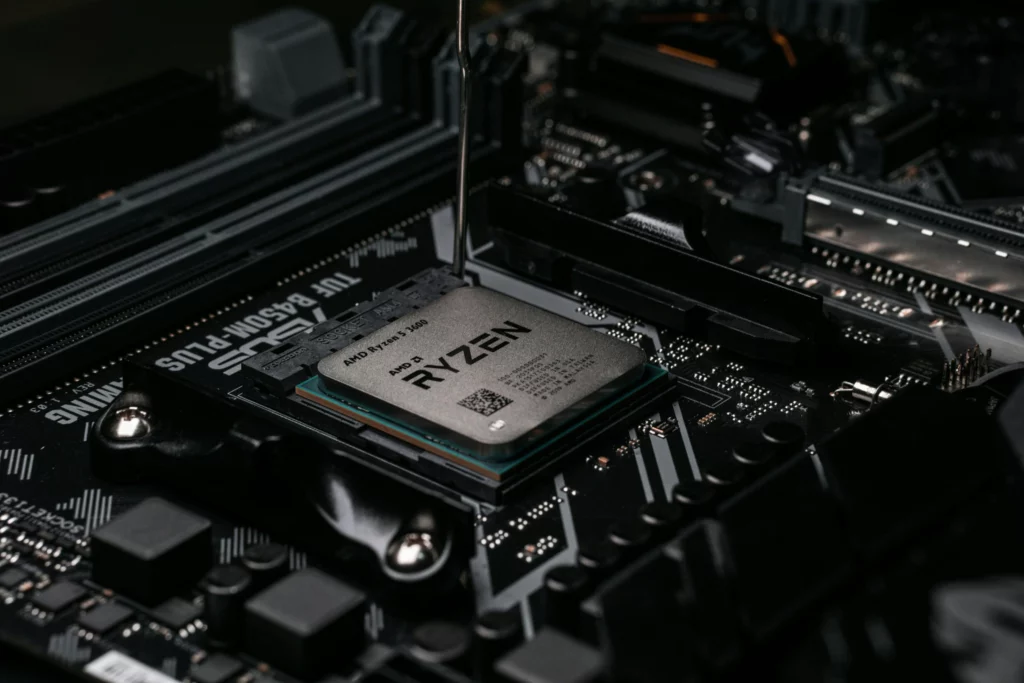Understanding the range of good idle CPU temperatures is essential for maintaining the health and efficiency of your computer. An optimal idle temperature ensures that the CPU is not overheating when it’s not under heavy load, which could otherwise lead to thermal throttling and potentially shorten the lifespan of your hardware. It’s generally accepted that an idle CPU temperature should be well below the maximum operating temperature specified by the CPU manufacturer.
Consistently monitoring CPU temperatures can help assess your cooling system’s effectiveness. Various factors, such as the CPU model, system load, ambient room temperature, and quality of the cooling system, can influence what is considered an appropriate idle temperature. For example, less demanding tasks like web browsing or word processing might not cause significant temperature rises, whereas gaming or video editing can lead to higher thermal readings. A good idle temperature for most CPUs is typically under 45 degrees Celsius, but this can vary depending on specific circumstances and hardware capabilities.
Key Takeaways
- Optimal idle CPU temperatures are crucial for hardware longevity.
- Idle CPU temp should stay significantly below the manufacturer’s maximum limit.
- Regular temperature monitoring can help optimise cooling performance.
Understanding CPU Temperatures
Temperature plays a pivotal role in assessing CPU health and performance, especially during its idle state. It provides a baseline for evaluating cooling solutions and workload handling.
What Is Idle CPU Temp?
Idle CPU temperature refers to the thermal state of a computer’s processor when it is not actively performing tasks or under minimal load. It is a benchmark to judge the efficiency of the computer’s cooling system and ambient environment.
Normal CPU Temperature Range
The normal temperature range for an idle CPU is generally between 30°C and 40°C (86°F to 104°F). Various factors, including the ambient temperature, can affect this range. A good idle CPU temperature is typically lower than the upper threshold of this spectrum to ensure some leeway as the CPU temperature rises under load.
These temperatures are considered safe and contribute to the CPU’s longevity. However, it’s essential that the idle temperature does not move too close to the maximum operating temperature specified by the CPU manufacturer, as consistently high temperatures, even at idle, can signal potential cooling issues or environmental factors that need addressing.
Factors Affecting A Good Idle CPU Temp
Multiple factors influence the idle CPU temperature, including the ambient room temperature, the computer case’s ventilation, and the efficiency of the CPU cooler.
Ambient Room Temperature
The ambient room temperature plays a crucial role in determining a CPU’s idle temperature. The CPU’s baseline temperature will also increase if the room temperature is high. Keeping the room at a comfortable 20°C to 25°C is typically recommended, which can help maintain optimal CPU operating conditions.
Computer Case Ventilation
Effective case ventilation is vital for maintaining a good idle CPU temperature. Cases with poor airflow can trap hot air inside, causing higher CPU temperatures. To ensure proper airflow, intake and exhaust case fans should be balanced, preventing heat from building up around the CPU and other components.
CPU Cooler Efficiency
The type of CPU cooler—whether an air cooler or a liquid cooling system—affects how well it can maintain low CPU temperatures at idle. A high-quality cooling solution that matches the specific heat output of the CPU is essential. An efficient cooler can disperse heat more effectively, ensuring better control over CPU temperatures.
Monitoring and Managing Temperatures
Effective temperature management is vital for computer performance and longevity. Users should regularly monitor CPU temperatures to ensure their system operates within safe limits and take measures to reduce high temperatures should they arise.
How to Monitor CPU Temp?
Users have access to various software tools to monitor CPU temperatures. For instance, HWMonitor is a widely utilised program that offers detailed information about the system’s hardware, including real-time temperature readings. Similarly, Open Hardware Monitor provides comprehensive temperature data, fan speeds, and voltages. For those with MSI graphics cards, MSI Afterburner allows temperature monitoring and offers overclocking features to boost performance. Moreover, Mac users can use programs such as XRG to monitor various system parameters, including temperature.
Reducing High Temperatures
To address cooling issues and reduce high temperatures, users might consider:
- Enhancing airflow: Ensure the computer’s case is not obstructed and there’s good air circulation inside and outside the case.
- Cleaning interior components: Dust accumulation can insulate heat; thus, periodically cleaning the interior can help with heat dissipation.
- Upgrading cooling systems: Installing additional or higher-quality fans or even advanced cooling solutions like liquid cooling systems can significantly improve thermal performance.
- Adjusting settings: Software like SpeedFan allows users to tweak fan speeds, leading to better temperature control.
If temperatures remain stubbornly high during high-stress tasks, software such as Prime95 can conduct stress tests and evaluate the adequacy of the current cooling setup. This program pushes the system to its limits, which helps users gauge the effectiveness of their cooling measures under heavy loads.
Impact of Idle CPU Temps on Performance
The thermal behaviour of a CPU at idle can profoundly impact its immediate performance and long-term reliability. Idle temperatures serve as a baseline from which the processor warms up under load; favourable conditions at idle can lead to superior performance and durability.
Thermal Throttling and CPU Load
When a CPU’s core temperatures exceed the manufacturer’s specified limits, thermal throttling occurs. This protective measure reduces the CPU’s clock speed to prevent damage from high temperatures. Such throttling can significantly diminish the CPU’s performance, leading to slower response times and reduced efficiency. During periods of high load, such as intense gaming or video rendering, a cooler idle temperature offers a buffer that allows the processor to operate at higher speeds for longer before throttling is required.
Longevity and System Stability
The longevity of a CPU is closely tied to the temperatures it maintains over its operational life. Consistently high core temperatures, even at idle, can accelerate wear and reduce the processor’s lifespan. Moreover, overheating can compromise system stability, leading to unexpected shutdowns or system crashes. A stable idle temperature is indicative of a cooling system’s effectiveness and is crucial for maintaining a stable and durable system. It is generally advised that idle CPU temperatures should remain well below 45 degrees Celsius for optimal longevity and efficiency.
Optimal CPU Cooling Practices
Selecting the right cooler and performing regular maintenance are crucial steps to ensure that a CPU operates within the best temperature range.
Choosing the Right CPU Cooler
The selection of a CPU cooler should be based on the specific workload the computer is expected to handle. For users who primarily engage in tasks such as gaming or rendering, a more robust cooling solution, such as an All-In-One (AIO) liquid cooler or a high-end air cooler with a large heatsink, is advisable. These advanced cooling systems provide superior heat dissipation compared to standard coolers. In considering a cooler, they must also ensure the cooler’s Thermal Design Power (TDP) rating matches or exceeds that of the CPU, to handle the heat output efficiently.
For Gaming/High-Workload:
- AIO Liquid Cooler
- High-End Air Cooler with a large heatsink
For General Use:
- Standard Air Cooler
- Low-Profile Cooler (for smaller cases)
Maintenance and Upkeep of the Cooling System
Regular maintenance of the cooling system is essential to sustain optimal CPU temperatures. This includes cleaning the dust from fans and heatsinks, which prevents airflow blockage and heat accumulation. Additionally, reapplying thermal paste periodically can significantly improve the heat transfer between the CPU and the cooler. Applying a pea-sized amount of thermal paste in the CPU’s centre every few years is recommended for consistent thermal conductivity.
Cleaning Schedule:
- Check monthly
- Clean dust as needed
Thermal Paste Application:
- Reapply every 2-3 years
- Use a pea-sized amount
By carefully selecting a cooler suitable for one’s CPU and usage and adhering to a routine maintenance schedule, the longevity of a computer’s components can be greatly extended.
CPU Manufacturer-Specific Temperature Considerations
Different CPU manufacturers, such as AMD and Intel, have specific temperature thresholds for their processors. Understanding these differences is paramount to ensuring the longevity and efficiency of the CPUs.
AMD CPU Temperatures
AMD CPUs typically have a maximum temperature limit of around 95 degrees Celsius. It is generally recommended that modern AMD processors operate at idle temperatures well below this threshold, often in the 30 to 50 degrees Celsius range. For instance, the Ryzen series is known for efficient thermal management and can safely operate at idle temperatures between 30 and 40 degrees Celsius. Users should periodically monitor their system to guarantee that the thermal performance aligns with these benchmarks.
Intel CPU Temperatures
Intel CPUs may vary in thermal specifications, but a safe idle temperature is commonly understood to be under 30 to 40 degrees Celsius. The higher-end Intel processors, like the i7-13700F, have a TJunction or maximum operating temperature of 100 degrees Celsius. It remains crucial for users to not consistently push their Intel CPU beyond this point, as it can accelerate wear and potentially lead to overheating issues.
Finding the specific thermal specifications for your CPU model on Intel’s web page can provide tailored guidance for optimum operating temperatures during idle and load conditions.
Advanced Temperature Management
Advanced temperature management is crucial when fine-tuning a computer system for better performance and longevity. Effective strategies involve a combination of hardware solutions and user intervention to keep CPU temperatures within safe operational ranges.
Overclocking and Temperature Control
Overclocking a CPU can significantly increase its performance, as well as its thermal output. When pushing a processor beyond its factory settings, it’s essential to have a robust temperature control strategy. Liquid cooling systems are often preferred in overclocked rigs due to their superior heat dissipation capabilities compared to standard air-cooled setups. Users must monitor the CPU temps assiduously to prevent damage from overheating. The ideal temperature should remain within a safe range—typically below 80°C under load, depending on the manufacturer’s specifications.
Custom Cooling Solutions
Custom cooling solutions offer the most flexibility for enthusiasts seeking optimal thermal performance. Tailored systems can combine several cooling methods, such as advanced air coolers, liquid cooling with custom loops, and even phase-change units. These setups are designed to maintain a safe range of operation, considering the ambient temperature, which can influence the cooling system’s effectiveness. The key is to apply a solution that matches the heat dissipation needs of the CPU, particularly if overclocking is involved. Custom solutions not only manage heat but also often contribute to a quieter and more aesthetically pleasing build.
Frequently Asked Questions
What range is considered safe for a CPU’s temperature when idle?
A CPU’s idle temperature should typically be between 30 ° and 45° C. This is considered safe for most processors regardless of make or model.
At what temperature should one become concerned about their CPU’s idle heat?
If the CPU’s idle temperature consistently rises above 45° C, one should become concerned. In such cases, it’s advisable to inspect the cooling system and airflow within the system.
How does ambient room temperature affect idle CPU temperatures?
Ambient room temperature directly affects idle CPU temperatures as the CPU often operates 20°C above the ambient temperature. Warmer room temperatures can thus lead to higher idle temperatures.
What factors contribute to higher-than-normal idle CPU temperatures?
Poor ventilation, dust accumulation, thermal paste degradation, and insufficient or failing cooling systems contribute to a higher idle temperature.
Can idle CPU temperature be an indicator of potential hardware issues?
Yes, idle CPU temperature can indeed be an indicator of potential hardware issues. Abnormally high temperatures may signal problems such as blocked vents, malfunctioning fans, or thermal throttling.
How do idle CPU temperatures differ between desktops and laptops?
Idle CPU temperatures in laptops are generally higher than desktops due to the compact design, which often results in less efficient heat dispersion.









